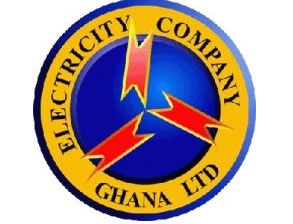
In spite of the numerous challenges facing the energy sector and the slide in crude oil, which has affected effective power distribution, the country’s main power distributor, the Electricity Company of Ghana (ECG) will benefit from a US$42.90million loan facility from government to support the electricity distribution system, reinforcement and extension project.
It follows a loan agreement reached between Government and the African Development fund for an amount of $42.90million and a grant of $29.79million. Subsequently, there is an on-lending agreement between Government and the ECG for the cedi equivalent of (Units of Account 28,600, 00) equivalent to US$42.90million to support the expansion drive of ECG.
This was contained in a report from the Finance Committee and submitted to Parliament for approval. John Jinapor, deputy Minister for Power indicated that the growth in electricity demand combined with insufficient investment in the electricity network development in the past has led to considerable strain on the distribution network.
“The project would reinforce and extend ECG’s distribution system and help Government to achieve its objectives of ensuring availability of reliable and universal access to energy services for domestic use and for export by 2020”.
The project is intended to complement the earlier investment by focusing on reinforcement of low voltage network within ECG’s Eastern and Western part of the Ashanti operational areas.
It comprise three main components such as the distribution system reinforcement and extension under component A, which will see the construction of a new 161/33kV, 4x50/66 MVA Bulk Supply Point (BSP) Substation at Kasoa and is expected to relieve the strain on the existing BSPs serving the rapidly growing Kasoa area.
There will be the construction of a new 161/33 kV, 2x25/33 MVA BSP substation at Juabeso and 33k circuits to link the BSP to existing stations as well as a new 33kV switching station and 33kV circuit to tie into existing network at Asankragwa.
Others involve the Distribution Network Reinforcement and Grid Intensification which is the reinforcement of existing power distribution system and extension of the system to cover un-electrified portions of the peri-urban or rural communities in the Kasoa, Juabeso, Asankragwa and the Volta Region.
Component B of the project will tackle the Off-grid Renewable Energy Electrification, expected to deploy off-grid solar PV systems to electrify 60 lakeside and island communities having more than 1,000 inhabitants and public facilities such as schools and clinics in 10 districts in the Volta and Eastern regions.
Whilst the final lap of the component will focus on Institutional development and Capacity building in sectors like the Renewable Energy Authority, Geographic Information System (GIS), Mini-micro Hydropower studies, ECG development, sector development and project implementation support.
The main objective of the project is to improve the Ghanaian population’s access to reliable and quality electricity services by reinforcing and extending ECG’s distribution system and deploying off-grid systems.
According to the chairman of the Finance Committee of Parliament,JamesKlutseAvedzi considering the current financial standing of ECG and the fact that disbursement of the Facility will be contingent on the provision of the counterpart funding on the part of ECG, they recommend to the Ministries of Finance and Power to ensure that the difference is timely provided by ECG to avoid non-disbursement on the part of the lender.
To ensure commitment to the repayment of the On-Lend Facility by ECG, ESCROW accounts (Principal Repayment account and the Interest payment Account) have been opened with the Bank of Ghana into which ECG shall pay the principal, all commitment charges and service charges.
The project will not only improve the performance of ECG’s distribution systems but will reduce the distribution system losses, frequency and duration of outages and improve the voltage level at the end user’s level.